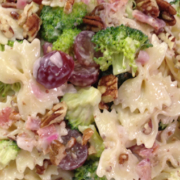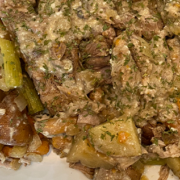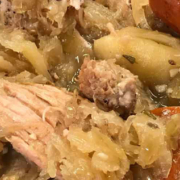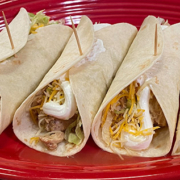4 Traditional New Year’s Eve Dishes to Try Out
New Year, New Dishes! From Thanksgiving to Hanukkah and Christmas, the holiday season is full of festivities. New Year’s Eve is a great finale to a fun-filled season. As 2021 comes to a close, let us at Sparkle Markets help relieve the pressure of finding new dishes or ideas to try out by trying these classic, traditional New Year’s plates, plus traditions to bring you a little luck while ringing in the New Year! Here is a list of ideas to help you celebrate this special tradition!
Pork and Sauerkraut, German
Germans have been eating pork and sauerkraut on New Year’s for generations because they believe it brings good luck (viel glück in German). As these kraut lovers immigrated to the Midwest, they brought their traditions with them, including this one. That’s why in Ohio and Pennsylvania, which received many German immigrants in the 17th and 18th centuries, people are almost religious about this delicious duo. Our recipe includes Pork, Sauerkraut and Kielbasa as another meat option for this New Years! Since this is an important tradition to many in our area, stop into Sparkle’s meat department and grab yours while you can!
Black-Eyed Peas, Africa
The practice of eating Black-Eyed Peas for luck is generally believed to date back to the Civil War. Originally, they were used as food for livestock and later as a food staple in the South. Today, the tradition of eating black-eyed peas for the New Year has evolved into several variations such as luck and prosperity. Even most avid fans of black-eyed peas will concede that enjoying the flavor, frequently described as nutty, earthy, and buttery, is an acquired taste. Try out Hoppin’ John this New Year’s where the Black-Eyed Peas are cooked with rice, pork (such as chopped pork or ham, hog jowls or hambones, fatback, or bacon), and seasonings. Stock up on all the necessary supplies on your next trip to Sparkle!
Tamales, Mexico
Tamales, corn dough stuffed with meat, cheese and other delicious additions and wrapped in a banana leaf or a corn husk, make appearances at pretty much every special occasion in Mexico. The holiday season, however, is an especially favored time for the food.
The tradition of tamales dates to Mesoamerican times when, long before the Spaniards arrived, Mesoamericans believed that God crafted humans from corn. As corn was so important, preciously wrapped tamales became a part of ritual offerings, a human stand-in, of sorts. In many families, groups of women gather to make hundreds of the little packets — with each person in charge of one aspect of the cooking process — to hand out to friends, family, and neighbors. On New Year’s, it’s often served with menudo, a tripe and hominy soup that is famously good for hangovers.
12 Grapes, Spain
In a tradition perfect for fruit lovers, the people of Spain traditionally watch a broadcast from Puerta del Sol in Madrid, where revelers gather in front of the square’s clock tower to ring in the New Year. Those out in the square and those watching at home partake in an unusual annual tradition: At the stroke of midnight, they eat one grape for every toll of the clock bell. Some even prep their grapes — peeling and seeding them — to make sure they will be as efficient as possible when midnight comes. The custom began at the turn of the 20th century and was purportedly thought up by grape producers in the southern part of the country with a bumper crop. Since then, the tradition has spread to many Spanish-speaking nations. Have leftover grapes? Throw them into our recipe for Broccoli Grape Cucumber Salad, which you can hand a container of to guests as a parting gift!
Trying out one of these traditional recipes above? Snap a picture and share it on social media! Sign up for our Sparkle E-Deals and get coupons, weekly recipes and specials delivered right to your inbox!











